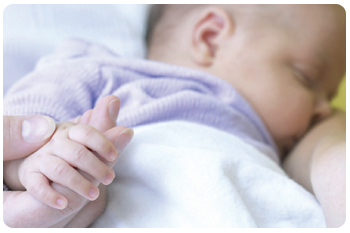
The procedure was applied to 197 PGD cycles (150 for β-thalassaemia, 19 for ALL, 16 for DBA, 3 for Histiocytosis, 3 for Adrenoleukodystrophy , 2 for Duncan Sindrome, 1 for Chronic granulomatous disease, 1 for FANCG, 1 for Wiscott-Aldrich syndrome and 1 for Mannosidosis-Alpha) performed for 106 couples. A total of 1488 embryos were tested for HLA typing in combination with a genetic disease, and 329embryos for HLA typing only (Table 2). A total of 2492 blastomeres was analysed, in 2292 (92.0%) of which a successful amplification was obtained (Table 1). Two hundred blastomeres resulted in the amplification failure for all the markers/loci tested. The amplification efficiency of the individual STR markers on blastomeres ranged from 92.2 to 100%, with an overall amplification rate of 98.2%. The ADO rates varied between the different loci investigated, ranging from 0.0 to 10.8%
A reliable HLA haplotype was obtained in 2292/2292 (100%) of the blastomeres with positive PCR results.
Totally, 1704 (93.8%) embryos were diagnosed; however testing for chromosome 6 copy number revealed 187 (11.0%) embryos with aneuploidies, including a total of 38 (2.2%) trisomies, 143 (8.4%) monosomies and 6 (0.4%) uniparental dysomies, which affected the HLA matching diagnosis for these embryos (Table 4), leading to a conclusive diagnosis in only 1517 (89.0%) embryos.
In total, 311 (18.3%) embryos resulted to be HLA matched with the affected siblings. In the 159cycles of HLA matching combined a with single gene disorder, although the overall number of HLA-identical embryos was 259 (18.5%), only 196 (14.0%) resulted also in an unaffected genotype. In the couples undergoing preimplantation HLA typing without testing for a causative gene, 52 (17.2%) embryos appeared to be HLA compatible with the affected children. Recombination was found in 38 (2.2%) embryos.
Overall 211 embryos were transferred to the patients in 132 of the 197 cycles performed (1.6 + 0.7 on average), and 50 pregnancies were achieved. Eight pregnancies resulted only biochemical, 11 spontaneously miscarried and one resulted ectopic, and was then terminated. Thirdy-one ongoing pregnancies were obtained. The ongoing pregnancy rate was 15.7% per cycle and 23.5% per transfer.
Fourteen pregnancies are still ongoing, while 3 twin and 14 singleton pregnancies, produced the birth of 20 healthy children, which were confirmed to be HLA identical to their affected sibling by blood samples HLA testing. Stem cells collected after delivery from the umbilical cords blood were transplanted to the affected siblings of 7 couples, resulting in a successful hematopoietic reconstruction for all patients.
Number of families treated with distinct indications for PGD and/or HLA. ongoing pregnancies. life births and cord blood transplantations (CBTs).
|
Diseases
|
 |
 |
 |
 |
 |
 |
 |
 |
 |
 |
 |
 |
| Adrenoleukodystrophy |
3 |
2 |
1 |
50,0 |
0 |
1 |
50,0 |
0 |
1 |
0 |
0 |
0 |
| β-Thalassemia |
150 |
81 |
38 |
38,8 |
7 |
31 |
31,6 |
8 |
10 |
13 |
15 |
5 |
| Chronic granulomatous disease |
1 |
1 |
1 |
100,0 |
0 |
1 |
100,0 |
0 |
0 |
1 |
2 |
0 |
| Diamond Blackfan Anemia |
16 |
3 |
4 |
36,4 |
1 |
3 |
27,3 |
2 |
1 |
0 |
0 |
0 |
| Duncan Syndrome |
2 |
1 |
0 |
0,0 |
0 |
0 |
0,0 |
0 |
0 |
0 |
0 |
0 |
| FANCG |
1 |
1 |
0 |
0 |
0 |
0 |
0 |
0 |
0 |
0 |
0 |
0 |
| Histiocytosis |
3 |
1 |
1 |
33,3 |
0 |
1 |
33,3 |
0 |
0 |
1 |
1 |
0 |
| Leukemia |
19 |
14 |
4 |
30,8 |
0 |
4 |
30,8 |
1 |
2 |
1 |
1 |
1 |
| Mannosidosis-Alpha |
1 |
1 |
0 |
0,0 |
0 |
0 |
0,0 |
0 |
0 |
0 |
0 |
0 |
| Wiskott-Aldrich Syndrome |
1 |
1 |
1 |
100,0 |
0 |
1 |
100,0 |
0 |
0 |
1 |
1 |
1 |
| Total |
197 |
106 |
50 |
37,9 |
8 |
42 |
31,8 |
11 |
14 |
17 |
20 |
7 |